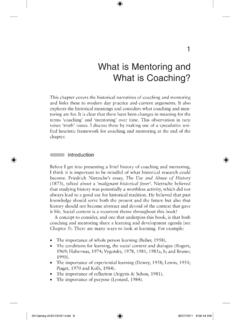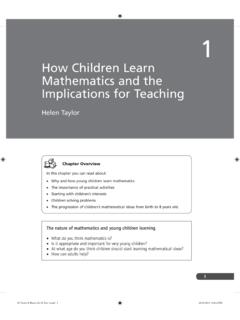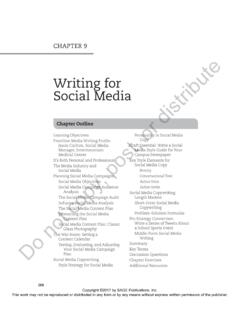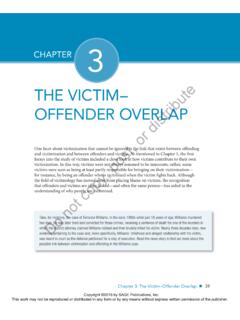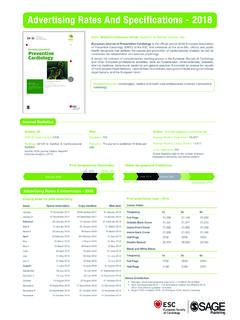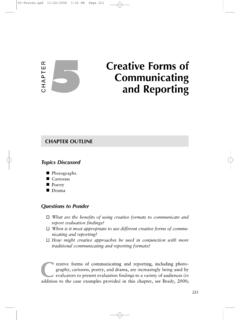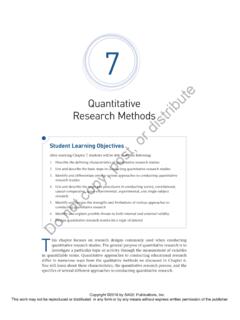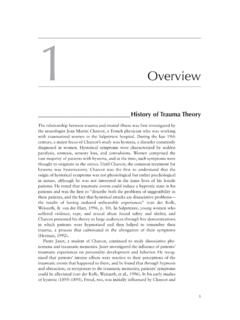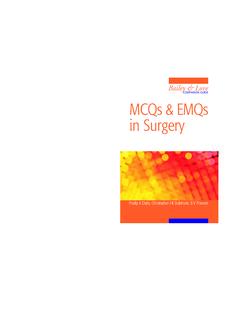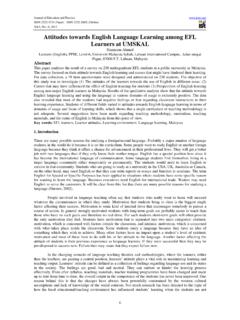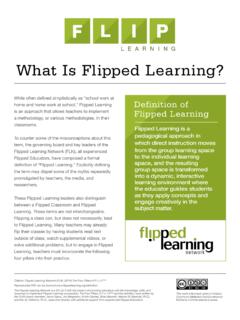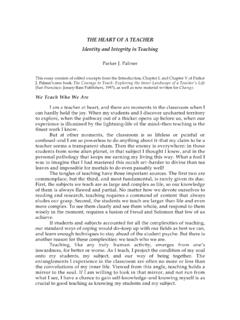Transcription of Assessing the Impact of Educational Video on Student ...
1 SAGE White PaperAssessing the Impact of Educational Video on Student Engagement, Critical Thinking and learning :The Current State of Play Michael CarmichaelSenior Publisher for Video , SAGE Publishing Abigail-Kate ReidFreelance Researcher, UK Jeffrey D. KarpickeJames V. Bradley Professor of Psychological Sciences, Purdue University, USA ContentsBackground 4 Overview 4 Key Findings 5 Methodology 5 Literature Review 6 Online Experiment 6 Analysis1. The Impact of Video in Higher Education Changing University Landscape and Video 7 Pedagogical Uses of Video 7 Benefits and Impact of Video Use 82.
2 Video and Student EngagementBackground and Context 9 Definition 1: Access and Attendance in Higher Education 9 Definition 2: Emotional Engagement 9 Definition 3: Engaging with Course Content 10 Barriers to Engagement 103. The Role of Video in Critical Thinking and Knowledge Development Cognitive Theory of Multimedia learning 10 Video and Knowledge Development 11 Student Motivation and Performance 114. Effective Video Design and Presentation Subject Matter 11 Mayer s Theory and Design Principles 12 Video Length 12 The Role of the Instructor in Video 13 Graphics in Video : SAGE Graphics Experiment 13 Conclusions 18 References 19 Acknowledgments 22 About the Authors 224 | A SAGE White Paper BackgroundVideo-based learning has long been used as an Educational tool to assist in classroom teaching, with earliest usage noted during the Second World War (Yousef et al.)
3 , 2014). A number of recent advances, most notably the rapid growth in access to high speed internet through homes, schools and personal devices such as tablets or smartphones, have had a significant Impact in changing the learning environment and accelerating Video use in higher education. Researchers note an explosion in online courses and a rapidly changing comprehension of how Video can be used effectively to enhance learning (Schneps et al. 2010).Within this explosive space of change and development, Educational institutions and libraries now sit with huge amounts of curiosity about what Video can and will do for their faculty and students. This is similarly the case for Educational publishers and Video distributors who are investing large sums of money in the creation and distribution of this content.
4 Some fundamental, key questions exist that have been and continue to be explored via numerous research endeavors: How is Video making a tangible difference in the higher education space; what Impact is it having on Student engagement with their course and learning ; and, perhaps most crucially, what are the measures of success of Video use both for students and researchers? Overview This paper collects much of the best and most recent research addressing these questions in the context of higher education, and makes some research contributions that are presented here for the first time. We do not promise to provide all (or even many) of the answers to the huge questions identified above, but instead aim to help interested parties find and then make sense of the existing knowledge, or as we call it, the state of play ; to provide some new insights to this existing body of knowledge via new research; and to identify areas where exciting opportunities for further investigation beckon.
5 As indicated, although some of the findings and recommendations may be relevant to other levels of education and students, this paper addresses Educational Video and students in higher education first and SAGE White Paper | 5 Key FindingsThe primary findings in this white paper are as follows: A significant way in which Educational Video is having an Impact on Student learning is both through the benefits it provides in the changing university landscape ( with the emergence of flipped classroom teaching), and also in how it is having a direct influence in changing practices in teaching and learning more generally. Video provides great benefits to teachers and learners, stimulating stronger course performance in many contexts, and affecting Student motivations, confidence and attitudes positively.
6 The concept of Student engagement has many definitions and no single, universal understanding. However Video is seen as having advantages for engagement in some specific ways, notably in widening participation, emotional engagement and overall course engagement. On the flipside, Video can put up some barriers to engagement ( challenges with technology). Very little is known about Video s role in knowledge development and helping critical thinking, and this is identified as a major gap in the research that requires more investigation. The cognitive theory of multimedia learning (Mayer 2014, Clark and Mayer, 2016) is an important framework through which to understand the processes involved and ways in which Video may assist or hinder learning .
7 It also sets out some key principles for effective Video design, spelling out recommendations for the interaction of visual, verbal and text-based content in Video . Shorter videos can increase median viewing times for videos, can improve learning outcomes and the likelihood that repeat usage will occur. However, this can also be achieved with proper segmentation on a Video platform. Students appear to find videos which include the instructor s image to be more engaging, or they engage more with course content as a result of instructor presence in Video . An appropriate balance is needed to ensure that instructor presence is not distracting while allowing for the inclusion of appropriate social cues which are essential for enhancing learning outcomes.
8 The use of graphics/visuals in videos generally makes a marginal difference to Student s judgment of their likely learning performance; their attention, interest and engagement levels; and their eventual learning performance compared with videos with no graphics/visuals. However, more research is needed to test this some more, and on whether specific types of graphics/visuals can make a significant difference in these respects. MethodologyGiven this background as well as the research aims, our study focused on four, specific questions that we wanted to undertake with some original research:1. What is the Impact of Video on Student learning in higher education?2. Does the use of Video in higher education Impact on Student engagement?
9 3. What evidence is there that the use of Video in higher education affects critical thinking skills and knowledge development?4. What types of content/ Video presentation make a difference to these aims?To help answer these questions, the following research strategies were employed: a full-scale literature review in relation to these questions, and the implementation of an original, online experiment to assess perceptions of Video content, as well as learning where graphics are used and not | A SAGE White Paper Literature ReviewInitially, an online search for peer-reviewed articles was carried out through JSTOR (an online library with access to over 10 million journal articles, books, and primary sources in 75 disciplines) as well as a general internet search.
10 The following four journals were identified as the current, leading journals in education and technology (listed in no particular order): 1. Computers & Education: An International Journal (Elsevier)2. British Journal of Educational Technology (John Wiley & Sons)3. Journal of Educational Technology & Society (International Forum of Educational Technology and Society)4. The Internet and Higher Education (Elsevier)Within the boundary of Educational technology these journals provided, further searches were then carried out using the search terms: critical thinking ; knowledge development ; and Student engagement to help focus the scope of the search. Other areas were filtered out, for example search results on Video games or virtual reality as well as Video conferencing.
